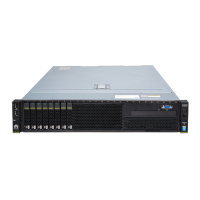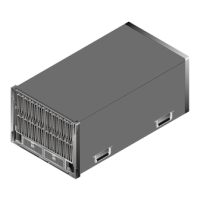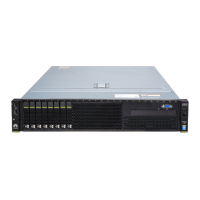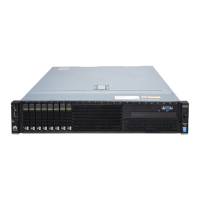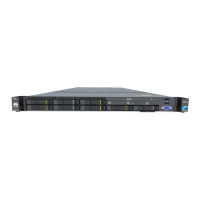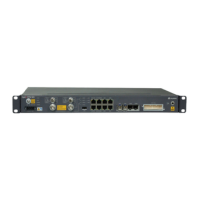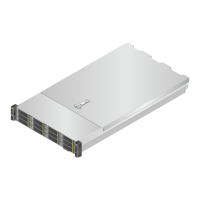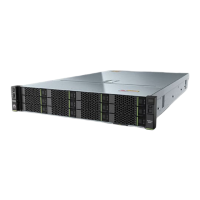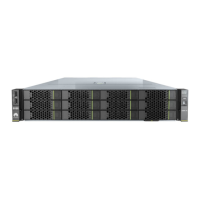Do you have a question about the Huawei 5288 V3 V100R003 and is the answer not in the manual?
Requirements for cabinet, space, temperature, and humidity for proper installation.
Methods for installing the server on L-shaped, adjustable, and holding rails.
Procedures for connecting power, network, USB, and serial cables to the server.
Steps for safely removing the server from installed guide rails.
Procedures for powering on the server using iBMC WebUI or CLI.
Procedures for powering off the server via iBMC WebUI or CLI.
Procedures for checking server status, versions, and alarms via iBMC.
Steps to view and configure RAID controller card information and settings.
Guide to setting server boot mode, PXE, and BIOS password in the BIOS utility.
Instructions for changing user passwords and enforcing complexity in iBMC.
Methods for configuring the iBMC management network port IP address via WebUI or BIOS.
Description of the Intelligent Baseboard Management Controller (iBMC) features and capabilities.
Procedures for upgrading firmware, drivers, and management software.
Procedure for safely removing hard disks from the server.
Procedure for safely installing hard disks into the server.
Procedure for removing NVMe PCIe SSDs from the server.
Procedure for installing NVMe PCIe SSDs into the server.
Procedure for removing AC and DC Power Supply Units (PSUs).
Procedure for installing AC and DC Power Supply Units (PSUs).
Steps to remove the server chassis cover for component access.
Procedures for removing PCIe cards from riser cards or mainboards.
Procedures for installing PCIe cards onto riser cards or mainboards.
Procedure to remove a RAID controller card from the mainboard.
Procedure to install a RAID controller card onto the mainboard.
Procedure to remove a CPU from the server socket.
Procedure to install a CPU into the server socket.
Procedure to remove a Dual In-line Memory Module (DIMM) from its slot.
Procedure to install a Dual In-line Memory Module (DIMM) into its slot.
Procedure to remove the server mainboard.
Procedure to install the server mainboard.
Step-by-step guide to access the iBMC management interface via web browser.
Instructions for accessing the iBMC via command-line interface over network or serial port.
Guide to remote console access via KVM for Windows, Ubuntu, and Mac OS.
Methods for erasing data from HDDs/SSDs using badblocks command or Toolkit.

